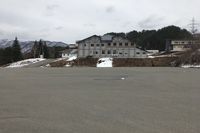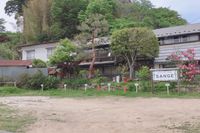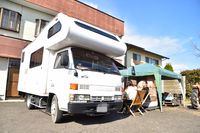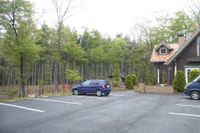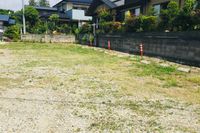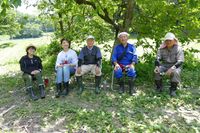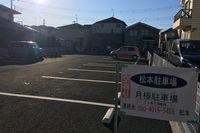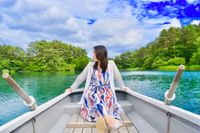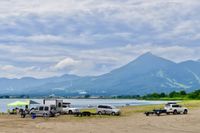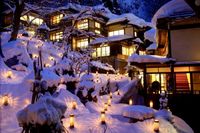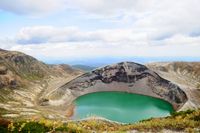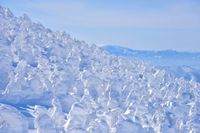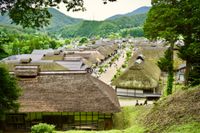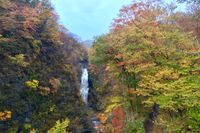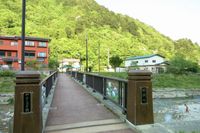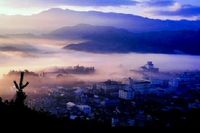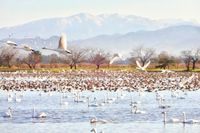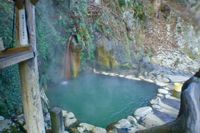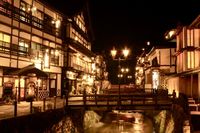Jododaira Wetland
福島県/福島市

Description
This is a large wetland in the Azuma mountain road. As the area is surrounded by mountains, making the air fresh, and as this blocks the light from the nearby city the area is ideal for stargazing. On a clear night, one can see around 6,000 stars with the naked eye, almost as if one is gazing directly into the universe. ※福島県 浄土平 © IKEMON750 クリエイティブコモンズライセンス(表示4.0 国際)https://creativecommons.org/licenses/by/4.0/
Homepage
Address
Nearby Car Night Spots
Nearby Activities
Whoever! Whatever! Farmhouse Experience 👨🌾
¥2,000〜
/ per personNigata Oseyanagi, Kita-ku Niigata-shi,
3.0
(0)Ranking Stations
Vanlife BASE | 45 min. from Narita Airport / Perfect for campervan travel/A seaside town rich in nature/Japanese countryside town/welcome traveler
¥7,000〜
/ per nightChiba Koseki, Kujukuri-machi, Sambu-gun
5.0
(61)(Bonfire BBQ) Chita Mihama Noma Beach Station
¥3,500〜
/ per nightAichi Noma, Mihamacho, Chita County
4.7
(42)Nearby Drive Spots
Goshikinuma
This is a small group of lakes of which there are more than 30, in the area of Ura Bandai, north of Mount Bandai. There area has swamps of various colors such as green, red, and blue which are colored as such due to the influence of the volcanic water quality and the surrounding plants and algae. Visitors can also enjoy boat rowing in the Bishamon Swamp.
Lake Inawashiro
This is Japan's fourth largest lake, situated in central Fukushima. The place is home to swans and swallowtail birds which are designated national treasures. There is a large camping area here, with Mount Bandai in the background, where visitors can enjoy various marine activities such as water boarding and water skiing.
Higashiyama Onsen
This is an old bath house in Aizu-Wakamatsu city. It has 1,300 years of history, and developed as an inner parlour house of the city during the Edo area(1603-1868). The place is famous as an area where the Vice President of Shinsengumi, Hijikata Toshizo healed wounded soldiers during the war. Geisha are still active around the town today.※Credit:旅と温泉の無料写真素材 おんふぉと http://on-photo.com/
Zao Fox Village
This is a zoo at the peak of Mount Zao in Minami-Zao. There are around 250 foxes of 6 types being raised here, with around 100 grazing in the fields. The owner opened this zoo in 1990 for the foxes (which were cultivated for fur) had no place to go. There are also rabbits, goats and ponies here too.
Okama Crater
This is a crater lake at the peak of Mount Zao, with an altitude of 1550m above sea level. As the water contains high levels of acid, there is no wildlife present, but the water shines a light green hue due to the acid levels. The name comes from the fact that the crater looks like a pot full of water.
Zao Onsen
Located at the western foot of Mount Zao, this is a hot spring with 1,900 years of history. It has characteristically acidic spring water and is known as "Princess water" due to its skin whitening effects (skin whitening seen as more favourable in Japan). As there is also a ski slope, skiing can also be enjoyed here in the winter. The area is famous for its views of the forest of snow covered trees.
Ouchi-juku
This is a area in southern Aizu which is an Edo-era(1603-1868) village which is "half agricultural, half residential". There are numerous thatched roof traditional houses which give the feeling of having travelled back in time to the Edo era. There is also a specialist "Spring onion Soba" shop where one uses spring onions to eat soba instead of chopsticks.
Akiho Onsen
This is an Onsen located in Sendai. It is located within a fluvial valley formed by the fluvial terrace on Natori River. In the Kofun era(250-538), the 29th emperor, Kinmei was particularly found of this onsen and received official royal status as an "Miyu" onsen.
Itamuro Onsen
This is an old bath house in Nasu Shiobara City. The bath house has over 1000 years of history and was famous for being known as the "Healing water of Shimotsuke". It became known as a "Rope bath" due to the unique way of entering by holding onto a rope, but was also known as the "cane no longer needed" bath due to its reputation for being so healing on the joints that old people who needed a cane to walk no longer needed it after being healed by the bath.
Tsukioka Onsen
This is an Onsen in the eastern part of Niigata prefecture. The water contains sulphur and is good for the skin, so is often known as an Onsen where "one can become beautiful". In the local town, there are numerous trendy cafes as well as traditional manju shops (manju is a bun with a yeast filling), Sake shops, sushi restaurants and traditional Izakaya.
Lake Hyoko
This is a wetland area in Niigata prefecture. From around October to March, around 6,000 swans migrate across this landscape, for which this area is famous. There are also around 100 other different types of birds that inhabit this area. This area was created around 400 years ago, and was so called due to its shape resembling the gourd fruit.
Shiobara Onsen
These are old fashioned baths in Nasu Shiobara City. The name comes from the 11 bath houses that are along the river. The area originally was called the 11 baths of Shiobara, and boasts more than 1,000 years of history as an Onsen town. The area is unique in the sense that there are several unstaffed onsen, and is popular for viewing the snow and winter landscapes while enjoying a warm onsen bath.※Credit:旅と温泉の無料写真素材 おんふぉと http://on-photo.com/
Ginzan Onsen
This is an onsen based in the eastern area of Yamagata prefecture. Historically, this area was prosperous for mining at Nobesawa Ginzan mountain, and Onsen became more prolific in the area from the Edo era(1603-1868). There are several wooden ryokan (lodgings) made from wood, that were constructed between the Taisho and Showa eras(1912~1989), and the area even now has an modern onsen village type atmosphere.

